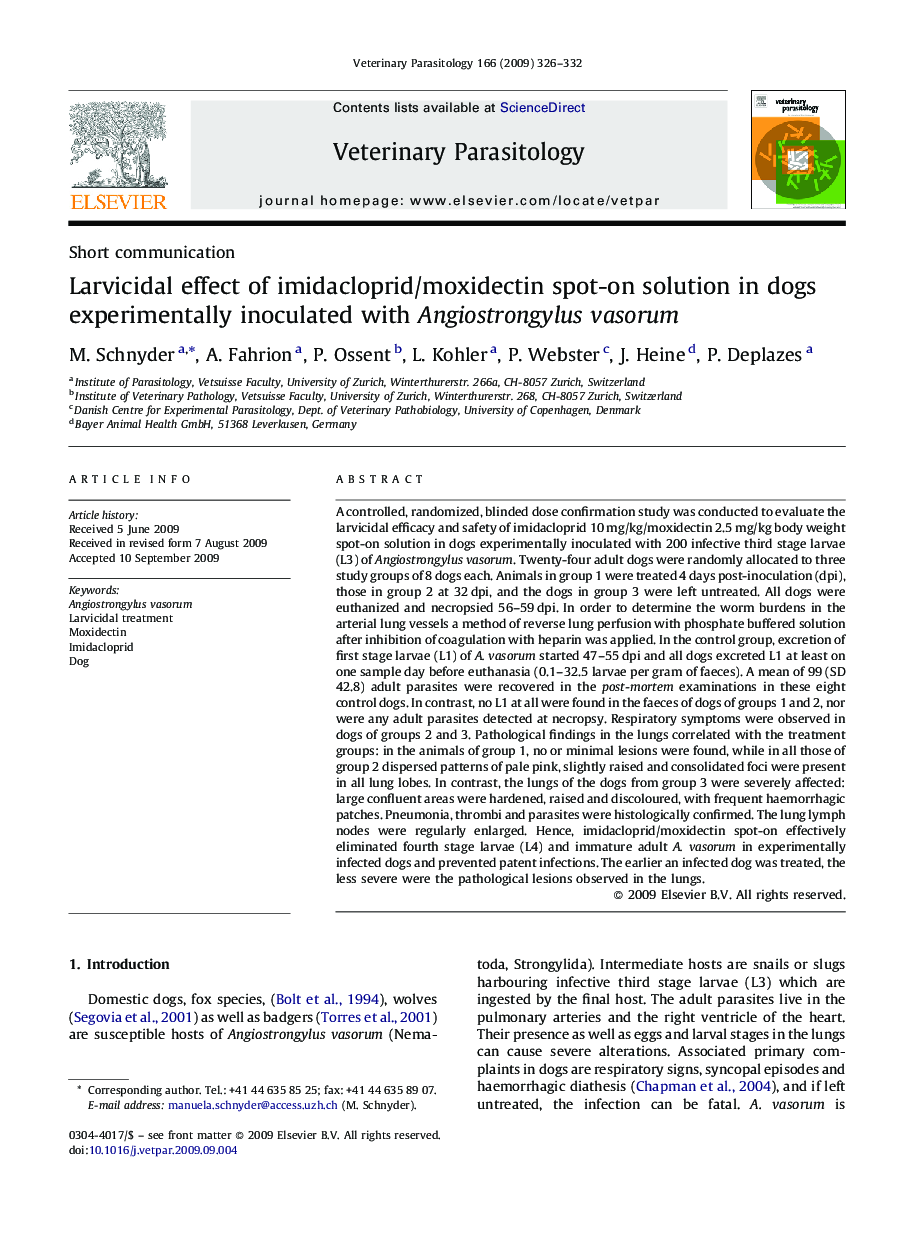| Article ID | Journal | Published Year | Pages | File Type |
|---|---|---|---|---|
| 2470918 | Veterinary Parasitology | 2009 | 7 Pages |
A controlled, randomized, blinded dose confirmation study was conducted to evaluate the larvicidal efficacy and safety of imidacloprid 10 mg/kg/moxidectin 2.5 mg/kg body weight spot-on solution in dogs experimentally inoculated with 200 infective third stage larvae (L3) of Angiostrongylus vasorum. Twenty-four adult dogs were randomly allocated to three study groups of 8 dogs each. Animals in group 1 were treated 4 days post-inoculation (dpi), those in group 2 at 32 dpi, and the dogs in group 3 were left untreated. All dogs were euthanized and necropsied 56–59 dpi. In order to determine the worm burdens in the arterial lung vessels a method of reverse lung perfusion with phosphate buffered solution after inhibition of coagulation with heparin was applied. In the control group, excretion of first stage larvae (L1) of A. vasorum started 47–55 dpi and all dogs excreted L1 at least on one sample day before euthanasia (0.1–32.5 larvae per gram of faeces). A mean of 99 (SD 42.8) adult parasites were recovered in the post-mortem examinations in these eight control dogs. In contrast, no L1 at all were found in the faeces of dogs of groups 1 and 2, nor were any adult parasites detected at necropsy. Respiratory symptoms were observed in dogs of groups 2 and 3. Pathological findings in the lungs correlated with the treatment groups: in the animals of group 1, no or minimal lesions were found, while in all those of group 2 dispersed patterns of pale pink, slightly raised and consolidated foci were present in all lung lobes. In contrast, the lungs of the dogs from group 3 were severely affected: large confluent areas were hardened, raised and discoloured, with frequent haemorrhagic patches. Pneumonia, thrombi and parasites were histologically confirmed. The lung lymph nodes were regularly enlarged. Hence, imidacloprid/moxidectin spot-on effectively eliminated fourth stage larvae (L4) and immature adult A. vasorum in experimentally infected dogs and prevented patent infections. The earlier an infected dog was treated, the less severe were the pathological lesions observed in the lungs.
